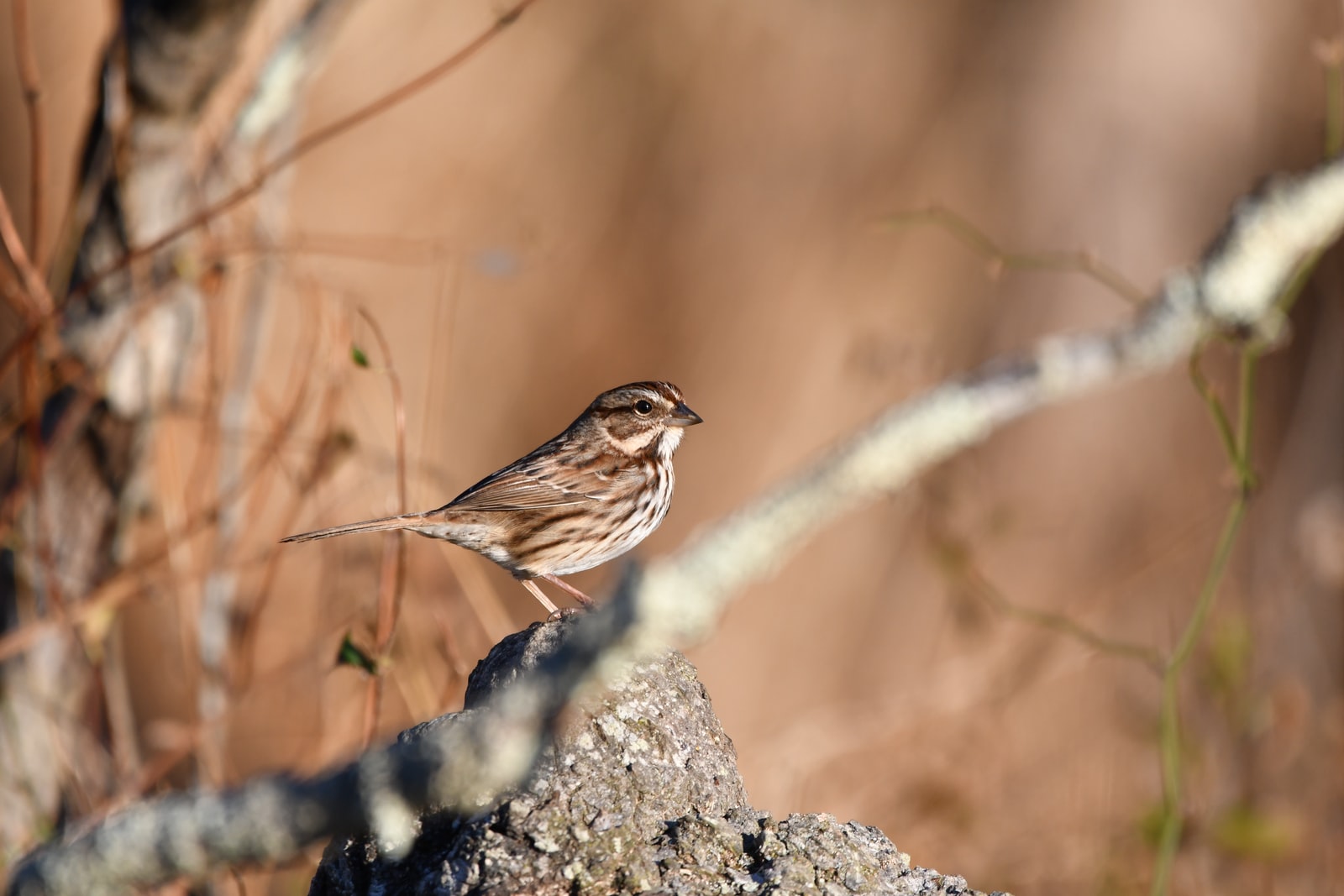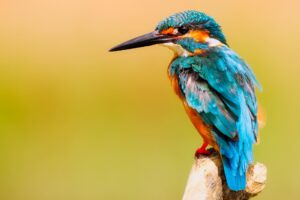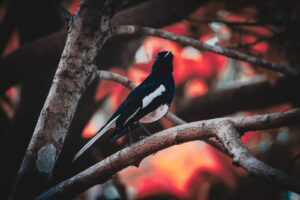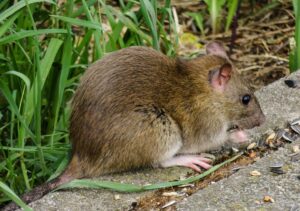Where do sparrows nest? You might be surprised to learn that sparrows don’t just build nests out of twigs and leaves! In fact, different types of sparrows prefer different materials for their nests. Some sparrows like to use mud, while others choose to build their nests out of grass or hay. No matter what material they choose, sparrow nests are always well-constructed and provide a safe crevice for the birds’ eggs.
Where do Sparrows prefer to build their nests and how?
Sparrows are small, brown birds that are found all over the world. In the UK, there are several different species of sparrow, including the house sparrow and the tree sparrow. Sparrows typically build their nests in trees or bushes, but they will also nest in man-made structures like birdhouses or even on window ledges.
Different types of sparrows use different materials to build their nests. Some sparrows, like the house sparrow, prefer to use straw or hay in their nests. Other sparrows, such as the tree sparrow, use mud to build their nests.
No matter what type of material they use, all sparrows build their nests in a similar fashion. First, the sparrow will choose a site for its nest. Once it has found a suitable location, the bird will start to gather materials for its nest. The sparrow will then use its beak to weave the materials together into a cup-shaped structure.
Now that you know all about where sparrows nest and how they build their nests, you can be on the lookout for these interesting birds the next time you’re outside!
What does a Sparrow nest look like?
Sparrow nests are small, cup-shaped structures that are built out of twigs, leaves, grass, hay, or mud. The inside of the nest is lined with soft materials like feathers or down.
Sparrow nests are typically built in trees or bushes, but they can also be found in man-made structures like birdhouses or on window ledges.
Will Sparrows use nesting boxes?
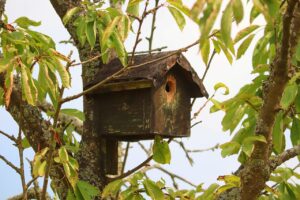 Yes, sparrows will use nesting boxes! If you’re interested in attracting sparrows to your backyard, you can purchase a nesting box or build one yourself. Be sure to place the nesting box in a tree or shrub rather than on the ground. When choosing a nesting box for sparrows, be sure to select a size that is appropriate for the bird. Sparrows typically nest in small boxes that are 5-6 inches wide and 3-4 inches deep. The entrance hole of the nesting box should be 1-1/2 inches in diameter.
Yes, sparrows will use nesting boxes! If you’re interested in attracting sparrows to your backyard, you can purchase a nesting box or build one yourself. Be sure to place the nesting box in a tree or shrub rather than on the ground. When choosing a nesting box for sparrows, be sure to select a size that is appropriate for the bird. Sparrows typically nest in small boxes that are 5-6 inches wide and 3-4 inches deep. The entrance hole of the nesting box should be 1-1/2 inches in diameter.
Attracting sparrows to your backyard can be a fun way to observe these interesting birds up close. By providing them with a suitable nesting site, you can help them to thrive.
A follow-up question that people often as is do sparrows reuse their nests? Yes, sparrows will often reuse their nests. The birds will typically add new materials to the nest each year, but they will not build an entirely new nest from scratch. If you find a sparrow nest that has been abandoned, you can remove it from your property, however, if you would like to attract sparrows to your back garden, you can leave the nest in place.
How long do baby sparrows stay in the nest?
After the eggs have hatched, the baby sparrows, or chicks, will stay in the nest for about two weeks. During this time, they will be fed by their parents and will grow rapidly. After two weeks, the chicks will leave the nest and start to fend for themselves.
What do Sparrow eggs look like?
Sparrow typically lay three to five eggs in their nests. The eggs are white with brown spots and hatch after about two weeks. The baby sparrows, called chicks, are born naked and blind. They grow quickly, though, and fledge (leave the nest) after only about three weeks.
How long does it take for a Sparrow egg to hatch?
It takes about two weeks for a sparrow egg to hatch.
How can you attract Sparrows to your garden?
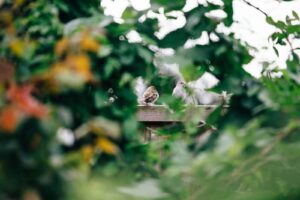 If you’re interested in attracting house sparrows to your back garden, you can purchase a nesting box or build one yourself. Be sure to place the nesting box in a tree or shrub rather than on the ground. When choosing a nesting box for sparrows, be sure to select a size that is appropriate for the bird. Sparrows typically nest in small boxes that are 5-6 inches wide and 3-4 inches deep. The entrance hole of the nesting box should be 1-1/2 inches in diameter. You can also attract sparrows to your yard by providing them with food and water. Sparrows enjoy eating seeds, so you can put out a bird feeder filled with seed mix. You should also provide a shallow dish of water for the birds to drink and bathe in. By providing sparrows with suitable habitats, you can help them to thrive.
If you’re interested in attracting house sparrows to your back garden, you can purchase a nesting box or build one yourself. Be sure to place the nesting box in a tree or shrub rather than on the ground. When choosing a nesting box for sparrows, be sure to select a size that is appropriate for the bird. Sparrows typically nest in small boxes that are 5-6 inches wide and 3-4 inches deep. The entrance hole of the nesting box should be 1-1/2 inches in diameter. You can also attract sparrows to your yard by providing them with food and water. Sparrows enjoy eating seeds, so you can put out a bird feeder filled with seed mix. You should also provide a shallow dish of water for the birds to drink and bathe in. By providing sparrows with suitable habitats, you can help them to thrive.
Are Sparrows bad to have around?
No, sparrows are not bad to have around. In fact, many people enjoy having these birds in their backyard. Sparrows are interesting to watch and can help to control insect populations. However, some people consider sparrows to be pests because they compete with other birds for food and nesting sites. If you find that sparrows are causing problems on your property, you can take steps to deter them. For example, you can remove bird feeders and nesting boxes from your garden. You can also trim back vegetation around your home to make it less hospitable for sparrows.
Sparrow Facts
- The English sparrow is one of the most numerous species in the UK, but its numbers have plummeted recently. Between 1994 and 2000, London’s sparrow population dropped by three-quarters.
- Although it is a long-standing resident of the United Kingdom, it isn’t considered to be a native; instead, it spread naturally north from North Africa.
- Sparrows are sociable birds that like to nest in large groups.
- The house sparrow is one of the few birds that are more delighted in the company of man than any other, and it is unusual to see them far from human settlements for much of the year.
- House sparrows don’t migrate, but in the past, urban flocks would go to the countryside in the late summer to eat ripe grains.
- When first hatched, young birds require a high proportion of animal matter (insects) in their diet, even though adults are mostly vegetarian.
- They frequently take over the nests of house martins, while in many parts of Europe they often nest in colonies in the base of white storks’ nests.
- Cats are significant predators of house sparrows, and they kill a large number of the young birds once they’ve fled their nests.

